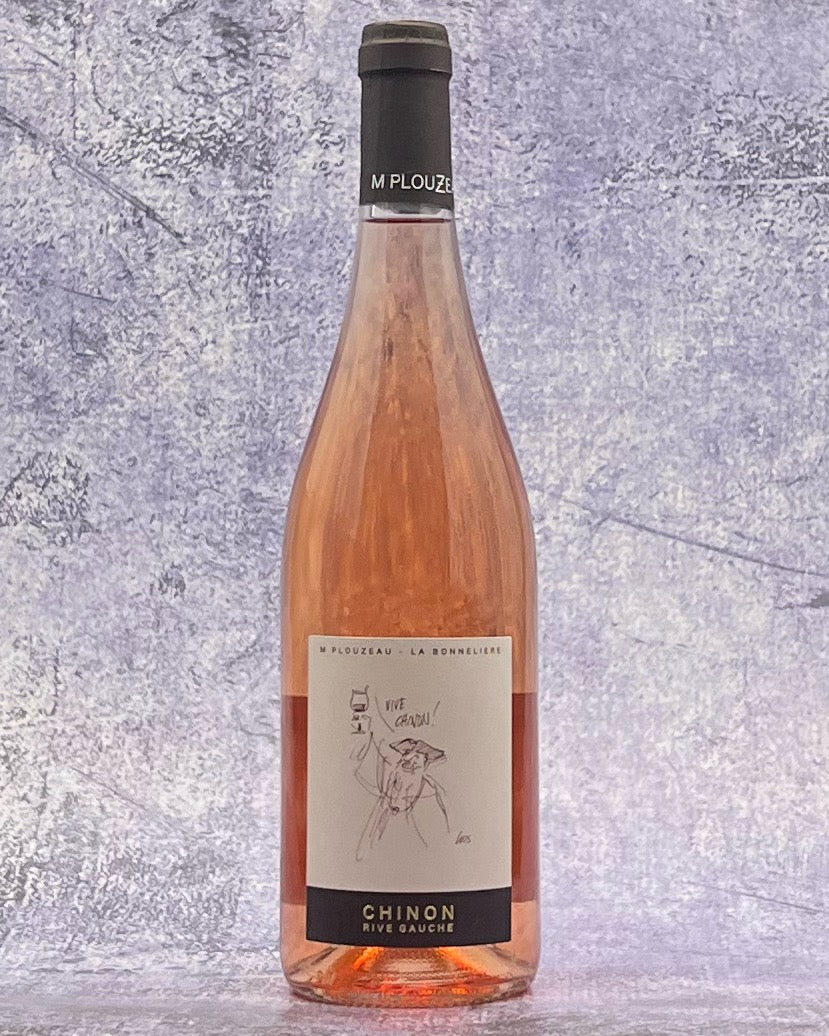Description
From: Chinon, Loire Valley, France
Varietal: Cabernet Franc
Taste: This charming Chinon rosé opens with buoyant notes of peppered orange peel, citrus, fresh red berries, and an underlying thread of river rock minerality. The palate largely follows suit, with a raspberry medley that takes center stage. Citrus highlights and ethereal tannins reign in the fruit component of this wine, and soft spice notes add dimension and texture. The 2023 Plouzeau Chinon Rosé is already drinking excellently, and we can’t wait for you to enjoy it throughout the summer!
Pairing: Loire Valley, Cabernet Franc rosés are notable because they combine straightforward enjoyment and food-pairing excellence with the perfect balance between fruit and savory components and a thread of minerality that ties it all together even though they can vary significantly in taste, texture, and aroma. These versatile rosés pair wonderfully with trout Rillettes, salmon as lox or gravlax, BBQ unagi served as sushi, sashimi, or instead of chicken teriyaki (PS that also pairs wonderfully), charcuterie and fromage, picnic fare like fried chicken or ham and cheese (or butter) sandwiches, Chinese roast pork, siu yuk (Cantonese crispy pork belly, check it out below), chicken/pork/tofu katsu, and even pizza.
Siu Yuk (Crispy Pork Belly)
Recipe from Cherry Tang
Adapted by Clarissa Wei
About. M. Plouzeau is a wine estate in the Loire Valley of France, specifically known for its vineyards in the Chinon area. The estate operates under the name M. Plouzeau - La Bonneliere. M. Plouzeau's wine estate, particularly noted for its operations at Château de la Bonnelière, boasts a significant history in the Chinon region of the Loire Valley. The Plouzeau family first became Château de la Bonnelière proprietors in 1846, marking the beginning of their long-standing involvement in viticulture.
A pivotal moment it occurred in 1980 when Pierre Plouzeau purchased the property, initiating a significant transformation by replanting the vineyard. This replanting was a crucial step in reviving the vineyard's productivity and quality after a long period of dormancy. In 1989, constructing a new winery at Château de la Bonnelière catalyzed a renaissance in winemaking at the site, which had seen a 70-year hiatus. This development reintroduced winemaking traditions to the estate, blending historical practices with modern techniques.
The legacy continues with Marc Plouzeau in 1999, who took over the management of Château de la Bonnelière and transitioned its operations to organic agriculture, emphasizing sustainable and environmentally friendly practices. Further expansion occurred in 2014 with the acquisition of the Domaine de La Croix Marie, which allowed the vineyard to extend to the Left Bank, thus enhancing the diversity and reach of their viticultural pursuits.
The philosophy of M. Plouzeau, in line with many producers in the Loire Valley, emphasizes respect for tradition and a commitment to sustainability. This includes practices like organic viticulture, minimal intervention in the winemaking process, and a focus on expressing the authentic characteristics of the terroir. The estate aims to produce wines that are not only reflective of the Chinon appellation but also exemplify innovation within the constraints of traditional methods.
Wine Notes: Meticulously crafted from Cabernet Franc vines that are 30 years old, flourishing in the alluvial soils of sand and gravel on the southern hillsides along the left bank of the Vienne River. This rosé benefits from the unique combination of these well-drained soils, contributing to the wine's freshness and aromatic intensity. Annually, the estate produces about 12,000 bottles of this distinctive rosé, employing a dual winemaking approach: direct grapes pressing from certain vineyard sections and a 12-hour maceration for others, enhancing the wine's smoothness and aromatic depth. Fermentation is meticulously managed at low temperatures, followed by a short aging in vats to preserve the wine’s vibrant characteristics, with a total sulfur dioxide (SO2) level maintained at 35mg/L, ensuring purity and stability.

